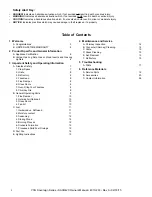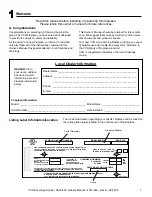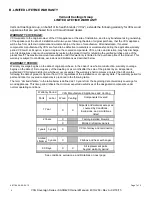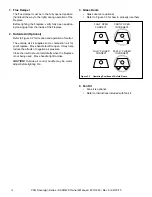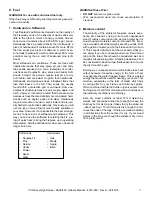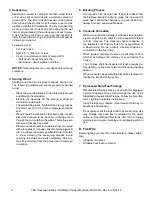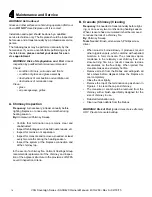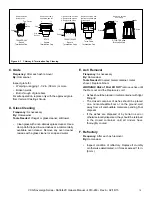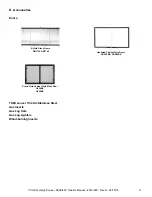
14
4
Maintenance and Service
WARNING! Hot Surfaces!
Glass and other surfaces are hot during operation AND cool
down.
DO NOT
clean fireplace until it is cooled.
Installation and repair should be done by a qualified
service technician only. The fireplace should be inspected
before use and at least annually by a professional service
person.
The following tasks may be performed annually by the
homeowner. If you are uncomfortable performing any of
the listed tasks,
please contact your dealer for a ser-
vice appointment.
A. Chimney Inspection
Frequency:
As necessary; at least annually before
lighting fireplace, or once every two months during
heating season.
By:
Homeowner/Chimney Sweep
• Confirm that termination cap remains clear and
unobstructed.
• Inspect for blockages such as bird nests, leaves, etc.
• Inspect for corrosion or separation.
• Inspect for creosote and remove as needed, at least
every two months during the heating season.
• Inspect the system at the fireplace connection and
at the chimney top.
In the event of a chimney fire, Vermont Castings Group
recommends replacement of the chimney and inspec
-
tion of the adjacent structure to the provisions of NFPA
Level III inspection criteria.
WARNING!
Risk of Asphyxiation and Fire!
Annual
inspection by qualified technician recommended.
Check:
• condition of doors, surrounds and fronts
• condition of glass and glass assembly
• obstructions of combustion and ventilation air
• obstructions of termination cap
Clean:
• glass
• air passageways, grilles
WARNING!
Risk of Fire!
Ignited creosote is extremely
HOT. Prevent creosote buildup.
B. Creosote (Chimney) Cleaning
Frequency:
As needed; at least annually before light
-
ing, or once every two months during heating season.
When creosote has accumulated it shall be removed
to reduce the risk of a chimney fire.
By:
Chimney Sweep
Tools
Needed: Brush, allen wrench, Phillips screw
-
driver
• When wood is burned slowly, it produces tar and
other organic vapors, which combine with expelled
moisture to form creosote. The creosote vapors
condense in the relatively cool chimney flue of a
slow-burning fire. As a result, creosote residue
accumulates on the flue lining. When ignited, this
creosote makes an extremely hot fire.
• Remove all ash from the firebox and extinguish all
hot embers before disposal. Allow the fireplace to
cool completely.
• Close the door tightly.
• Remove the top of the termination cap as shown in
Figure 4.1 to clean the cap and chimney.
• The creosote or soot should be removed from the
chimney with a brush specifically designed for the
size of chimney in use.
• Reinstall termination cap.
• Clean out fallen debris from the firebox.
VCG Sovereign Series • SA36/42C Owners Manual • 4010-263 • Rev A • 02/18/15


